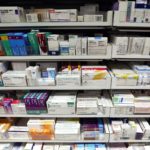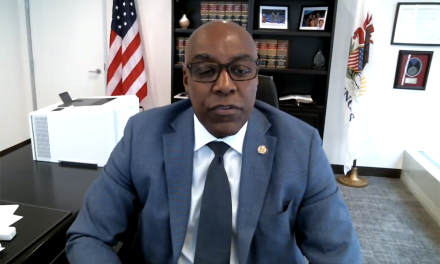
IDPH urges caution, vaccination as weekly case rate spikes

The Illinois Department of Public Health said Friday that COVID-19 is “not showing signs of further waning” and urged residents to start taking precautions against the viral spread.
“The case rates for COVID-19 are no longer declining and are rising in some areas of the state and have plateaued in other areas over the last two weeks,” they said in a statement. “However, hospitalizations and deaths continue to remain low at this point in time.”
All but four of Illinois’ 102 counties were at low risk for COVID-19, according to the Centers for Disease Prevention and Control’s COVID-19 dashboard. Four southern Illinois counties, Gallatin, Hardin, Pope and Saline, are at high risk.
As of Thursday, 502 Illinoisans were in the hospital with COVID-19, down 15 from Wednesday and up two from the prior week.
Of the patients in the hospital, 62 were in intensive care units, up five from Wednesday and down 11 from the prior week. There were 24 patients on ventilators, up two from Wednesday and down two from the prior week.
IDPH reported 10,786 confirmed and probable COVID-19 cases last week, up 28 percent from the prior week. There were 71 new deaths reported last week, down 18.4 percent from the prior week.
The new cases bring the state total to 3,080,436, while the death toll increased to 33,465.
The seven-day average for new cases on Friday was 1,541, up 337 from the prior week. The seven-day average for daily deaths is 10, down two from the prior week.
The seven-day statewide positivity rate for cases as a percent of total tests is 2.1 percent. The seven-day statewide test positivity using the number of COVID-19 positive tests over total tests is 2.3 percent.
About 81.2 percent of eligible Illinoisans ages 5 and older have received at least one dose of a COVID-19 vaccine, while 72.6 percent are fully vaccinated.
Illinois vaccinators have administered 21,509,463 COVID-19 vaccines, including 4,316,673 booster doses. The seven-day average of doses administered is 19,926.
Sixty percent of total doses administered went to white Illinoisans, while 15.6 went to Latinx residents, 11.2 percent to Black residents and 7.2 to Asian residents. About 3.1 percent went to those identified as “other races” while 2.3 percent are “unknown.”









